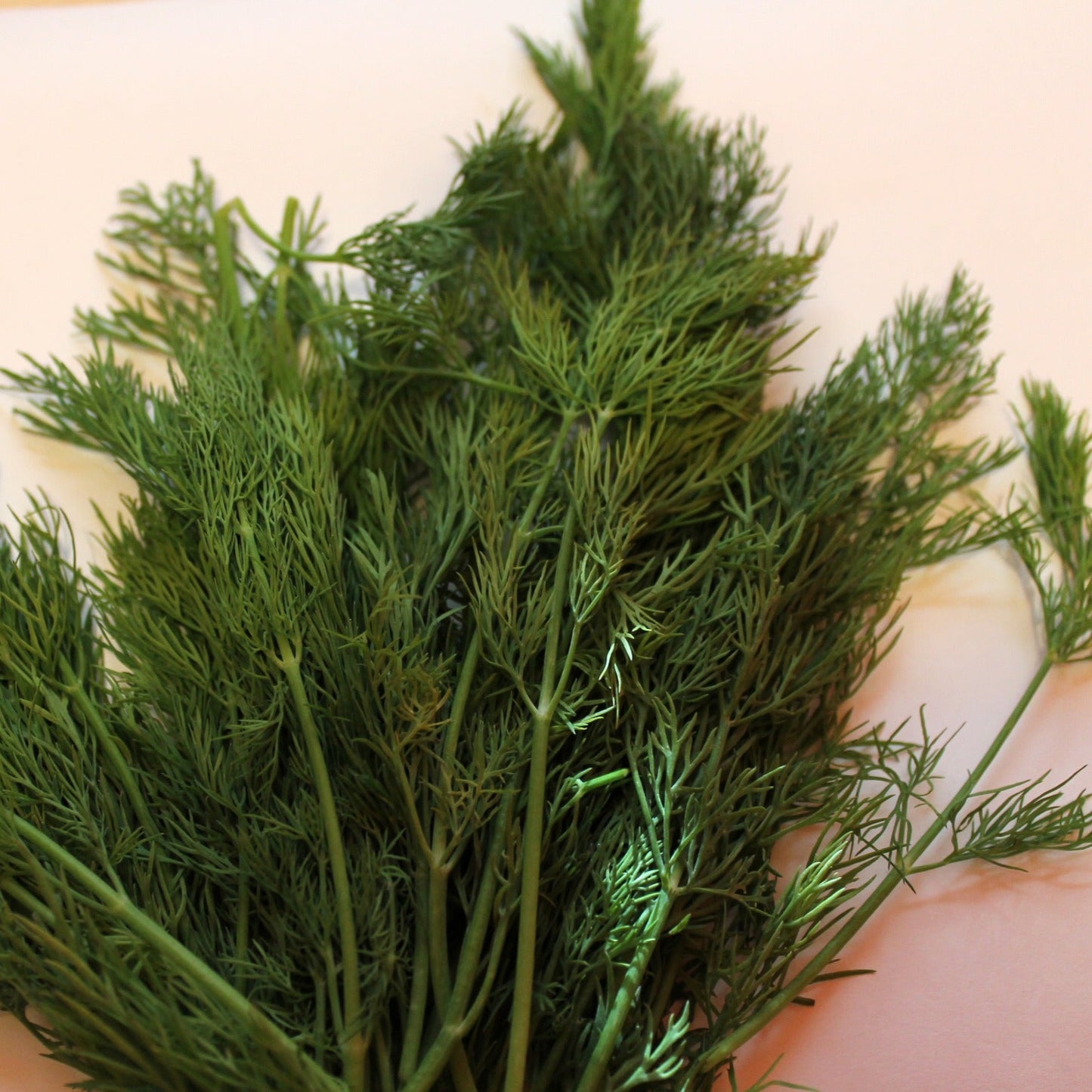
Product Information
Planting Guide
| Jan | Feb | March | April | May | June | July | Aug | Sep | Oct | Nov | Dec |
|---|---|---|---|---|---|---|---|---|---|---|---|
| J | F | M | A | M | J | J | A | S | O | N | D |
|---|---|---|---|---|---|---|---|---|---|---|---|
Sow
Sowing and Growing Guide
Dill - Mammoth
Indoor Sowing
- Sow seeds indoors 4-6 weeks before the last expected frost date.
- Fill seed trays with seed starting mix and sow seeds 1/4 inch deep.
- Keep the soil moist and at a consistent temperature of 60-70°F.
- Seedlings should emerge in 7-14 days.
- Once seedlings have developed their first true leaves, thin them to one per cell.
- Transplant seedlings outdoors after the last frost date.
Outdoor Sowing
- Sow seeds directly into the garden after the last expected frost date.
- Choose a sunny location with well-draining soil that has been amended with compost.
- Sow seeds 1/4 inch deep and 1 inch apart in rows spaced 12-18 inches apart.
- Keep the soil moist and weed-free.
- Thin seedlings when they are 2-3 inches tall, leaving 12-18 inches between plants.
Growing
- Dill prefers well-draining soil that is rich in organic matter.
- Water consistently to keep soil evenly moist but not waterlogged.
- Fertilize once a month with a balanced fertilizer.
- Protect plants from pests, such as aphids and spider mites, by spraying with insecticidal soap.
- Harvest leaves when they are young and tender, before the plant flowers.
- Harvest seeds when the seed heads turn brown and dry.

